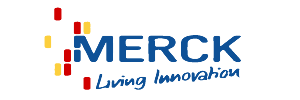Connectee:
As mentioned earlier, TAL effectors can bind DNA with target sequence. We devote to apply this binding character on the plasmid to achieve enzyme polymerization in vivo.
At first, test should be taken to check whether TAL can bind plasmid DNA in prokaryotic system, here we use E.coli. We designed two kinds of fusion protein called connectee.
Connectee 1:
The first kind of connectee is designed to be tested on the membrane, which is consist of three major domains, membrane anchor system(ssDsbA-Lgt), mRFP and TAL effectors.
The reason why we choose a membrane anchor is that:
- TAL could bind nucleoid which may bring some effect on bacteria growth.
- Membrane scaffold is a natural scaffold.
- Exogenous proteins often form inactive inclusion body when expressed in the prokaryotic system
[图片一]
The membrane anchor system (ssDsbA-Lgt) comes from BBa_K771000 designed by iGEM12_SJTU-BioX-Shanghai(reference); mRFP comes from BBa_E1010 designed by Antiquity; TAL effectors comes from TAL-Protein DiRepeats (Bba_K747000 to Bba_K747095) designed by iGEM12_Freiburg. We use Helical Linker to connect mRFP and Lgt, in accord with iGEM12_SJTU-BioX-Shanghai. While in consideration of any possible stereospecific blockade when TAL binds plasmid DNA, we choose Flexible Linker to connect Lgt and TAL.
Connectee 2:
The second kind of connectee is designed to be tested in the cytoplasm, which only contain TAL effectors.
[图片二]
Connector:
As iGEM12_Freiburg designed, we can choose a 14-nucleotide-long Transactivator-like (TAL) protein TXXXXXXXXXXXXT to recognize the same sequence on the plasmid DNA.
The plasmid here we called connector.
The principle for choose a TAL recognize sequence:
- Not exist in expression vector;
- Not exist in the sequence of connectee;
Test method:
In consideration of our multiple-enzyme system may be applied in the following experiment, we choose pRSFDuet–1(NOVAGEN) as the expression vector.
[图片三]
pBluescript II KS(+) is chose as the connector for test for several reasons:
- High copy number;
- Medium length—2961bp
- Easy to test whether binding a TAL may have effect on gene expression—lacI & blue-white spot screening
[图片四右]
Similar with the cross-linked ChIP, we use formaldehyde to cross-link connectee and connector;
After that we do immunoprecipitation to get the protein-plasmid complex and digest protein;
Finally, doing a PCR to check is there any plasmid DNA exist.
Why membrane:
The reason why we choose membrane anchor but not let it free in cytoplasm is that:
- TAL could bind nucleoid which may bring some effect on bacteria growth.
- Membrane scaffold is a natural scaffold.
A convenient part:
In order to be used cooperatively with TAL-Protein DiRepeats (Bba_K747000 to Bba_K747095), we also design a part named ssDsbA-mRFP-Lgt-TAL adapter-His Tag (BBa_K1453000).
[同图片一]
This part is consists of T1 sequence, T14 sequence and two sites for type II restriction enzyme BsmBI. When digested with BsmBI, this part can produce two sticky-ends. One can complement with the first TAL-Protein DiRepeat (Bba_K747000 to Bba_K747015) at 5’ of the sequence, while the other can complement with the sixth TAL-Protein DiRepeat (Bba_K747080 to Bba_K747095) at 3’.
With the rest of TAL-Protein DiRepeats (Bba_K747016 to Bba_K747079), users can synthesize a 14-nucleotide-long Transactivator-like (TAL) protein to recogize their own connector and design their own polymerization. (Golden Gate Cloning)
More details about membrane anchor, please view this page.
More details about TAL and Golden Gate Cloning, please view this page.
Reference:
- Pailler, J., W. Aucher, et al. (2012). “Phosphatidylglycerol: prolipoprotein diacylglyceryl transferase (Lgt) of Escherichia coli has seven transmembrane segments, and its essential residues are embedded in the membrane.” Journal of bacteriology 194(9): 2142–2151.
- Schierle, C. F., M. Berkmen, et al. (2003). “The DsbA signal sequence directs efficient, cotranslational export of passenger proteins to the Escherichia coli periplasm via the signal recognition particle pathway.” Journal of bacteriology 185(19): 5706–5713.
- Scholze, H. & Boch, J. TAL effectors are remote controls for gene activation. ‘‘Current Opinion in Microbiology’’ 14, 47–53 (2011).
- Moscou, M. J. & Bogdanove, A. J. A Simple Cipher Governs DNA Recognition by TAL Effectors. ‘‘Science’’ 326, 1501–1501 (2009).
- Conrado, R. J., G. C. Wu, et al. (2012). “DNA-guided assembly of biosynthetic pathways promotes improved catalytic efficiency.” Nucleic acids research 40(4): 1879–1889.
- Yang, Zhong, et al. “Highly efficient production of soluble proteins from insoluble inclusion bodies by a two-step-denaturing and refolding method.” PloS one 6.7 (2011): e22981.
 "
"







